Almost everything you need to know about carbon capture technology
Elon Musk is offering $100m to create the best carbon capture technology but the truth is there are already many ways we can capture harmful carbon out of the air, writes Andy Martin

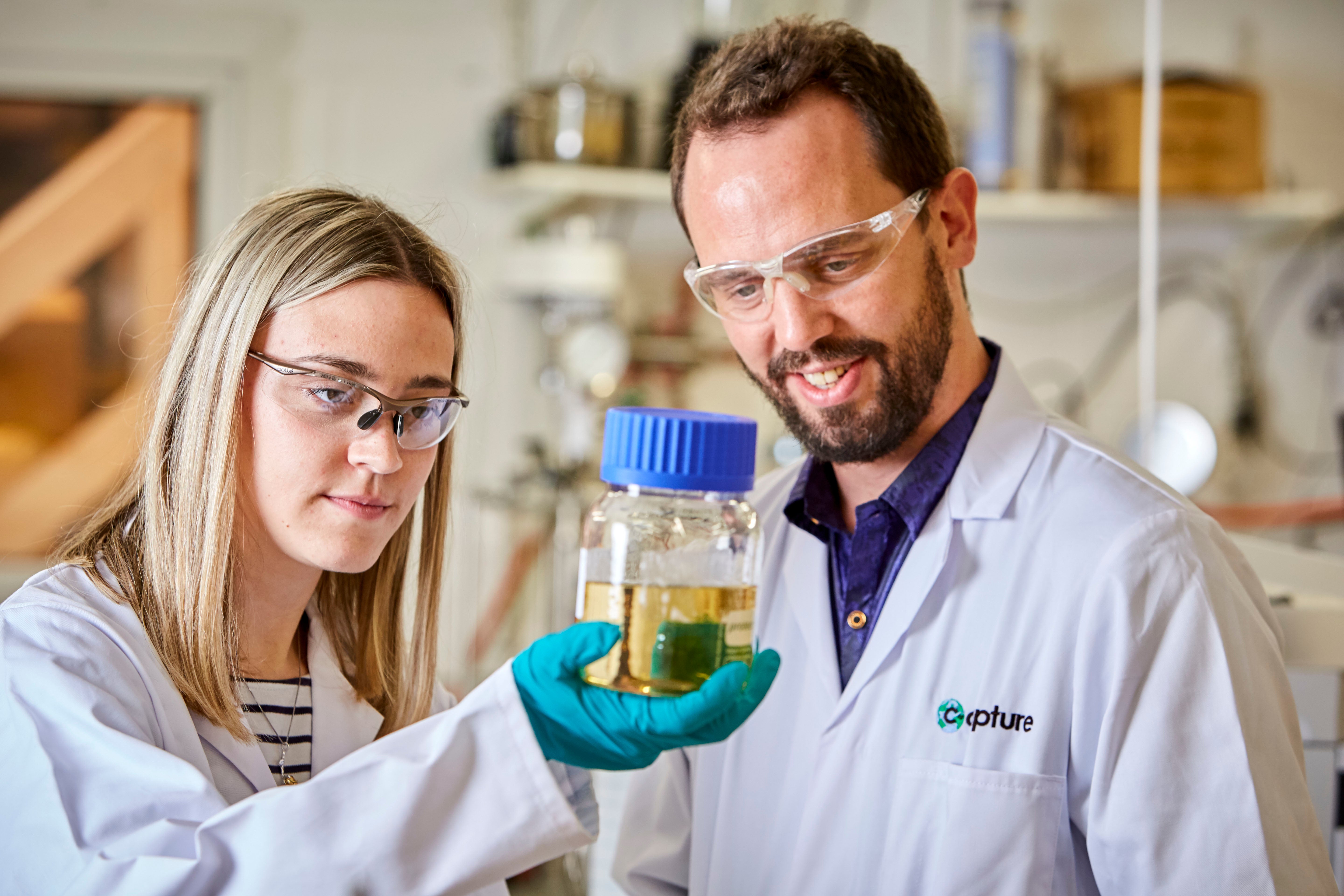
If you could go back in time and reverse the history of the 20th century, where would you start – and where would you stop? Bump off Hitler perhaps (and/or Stalin/Pol Pot, etc). Maybe save JFK. Call a halt to the Holocaust. Or, bearing in the mind the climate change catastrophe that is now upon us, what about trying to stop the juggernaut of the oil industry in its tracks, neutralise Exxon, Esso and BP, and thereby cool global warming?
The good news is that this science fiction fantasy – a kind of palindromic history – is starting to happen: at least the last bit. It is now possible to rewind the movie and put fossil fuels right back where they came from and were safely stored for millions of years, in the interior of the Earth, not flowing and floating around the exterior. The nascent carbon capture industry is plucking CO2 right out of the air and diverting it down other much safer avenues (in the business, “removal” refers to extracting molecules already in the atmosphere, whereas “capture” operates on the source of emissions; I use “carbon capture” to include both).
Obviously we have been talking about it – from Hollywood to Holyrood. But the point about carbon capture is that it is moving out of the realm of pure talk and into the more important realm of people who are actually doing it.
Read More:
I recently spoke to a finance specialist about carbon capture and he said that it was great, and it would happen, but there was as yet no way to make it commercial – “costs are prohibitive”. But it turns out he’s wrong – it’s already happening and it’s now possible to make it work economically too.
In 2007 Richard Branson launched his Virgin Earth Challenge, offering a prize of $25m for the best carbon capture technology company. Ten thousand wannabes stepped forward. In 2019, Branson shut the scheme down, having handed out no prizes. But in January this year, Elon Musk launched a new climate beauty contest, offering a full $100m to serious carbon capturers, able to pull at least a ton a day out of the air or the ocean. This time somebody has to win, I reckon. And there is no shortage of contenders. Momentum behind new kinds of carbon-munching tech has been building in 2020.
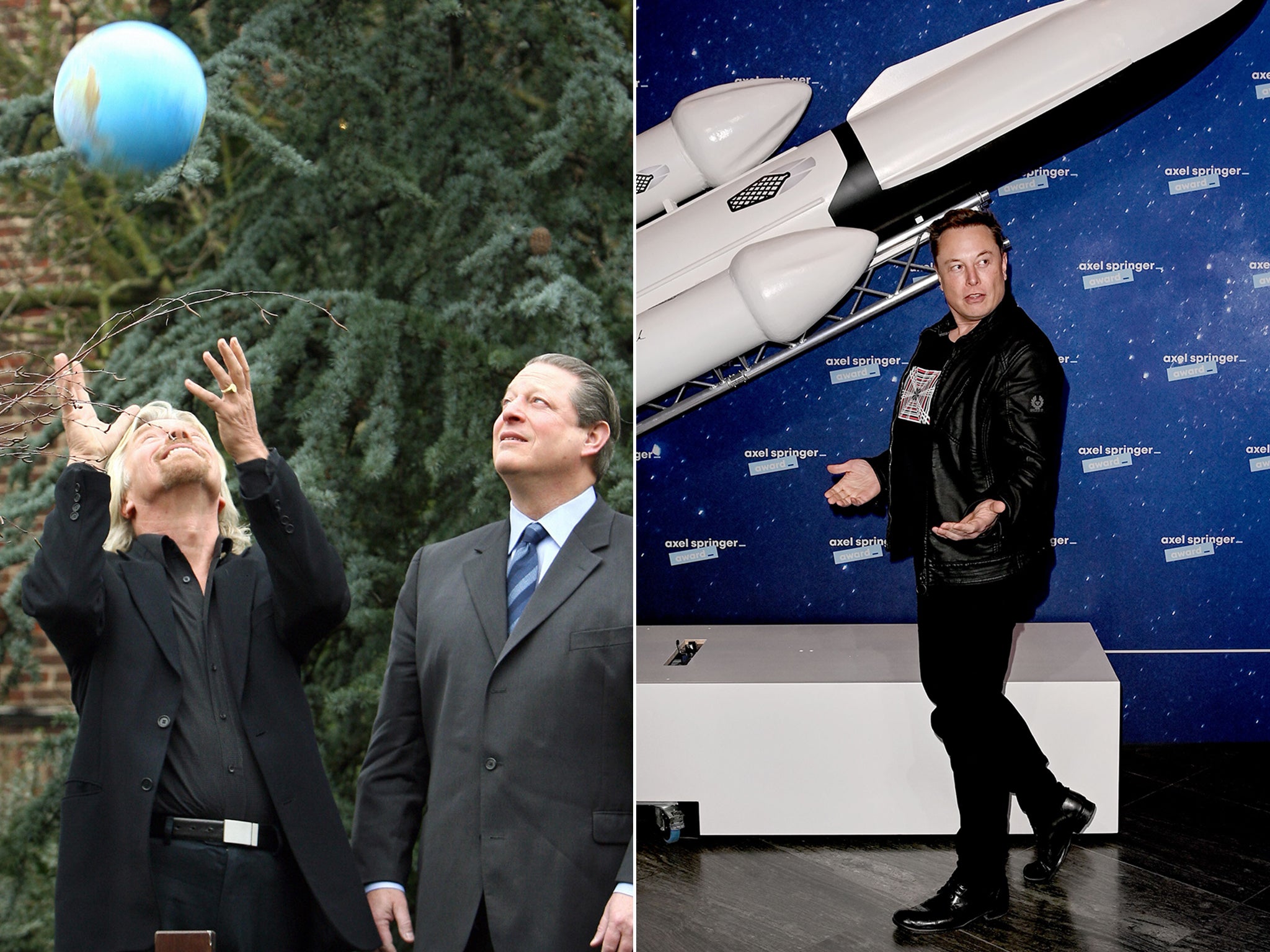
In the pre-industrial revolution era, atmospheric CO2 stood at around 280 parts per million. When we started measuring it in 1958 14,000 feet up at the beautiful Mauna Loa mountaintop observatory in Hawaii, it was 316 ppm; now it’s well over 400; in another 50 years we will hit 500 (if we follow the “Keeling Curve”). Bill Gates estimates 51 billion tons (US) of greenhouse gases per annum going up in smoke. Temperatures will keep soaring, forests will keep burning, islands will go under, glaciers will melt, corals will die and jellyfish will take over the oceans. Unless we can do something about it.
Very few companies actually want to emit greenhouse gases – and least of all to be known as dirty. Everyone (eg Patagonia, Unilever, Ikea) is running around trying to reduce their carbon footprint, minimising the amount of emissions and offsetting like mad. But the fundamental reality is we will never reduce it quite enough in this century. Look at all those industries (like steel and cement) who basically can’t eradicate their dependence on fossil fuels. So we have no option but to claw back the CO2 out of the atmosphere where it ends up if we want to keep increased warming down to 1.5 degrees (the maximum proposed by the Intergovernmental Panel on Climate Change). The simple but inescapable equation is that “if we want to get to net-zero we have to subtract as much CO2 as we are adding”, says Albert Howard, head of sustainability at Sourceful.
Think of all those old movies in which oil is gushing up out of the ground. Now rewind the film. Shove the black stuff back in again
No one has yet captured the Elon Musk prize, but three outstanding carbon capturers from around the world have recently been spotlighted by Sourceful Climate. “We’re pointing the way,” says Howard. Sourceful do good things to the supply chain, helping other companies to clean up their act and source the right stuff to make their products more sustainable. They are already shrinking carbon footprints. Now they have backed their three carbon removal companies, nominated by an independent panel of academics, with an offer of 1:1 funding to match other contributions.
One of them, Greensand, based in the Netherlands, has already been around for a few years. It began back in 2008 when Eddy Wijnker went to the Beijing Olympics. Wijnker had started off as lead guitar in a Dutch rock band but morphed into a sound engineer. He was supposed to be in Beijing to keep an ear on the sound systems, but he got sidetracked by a green stone that nearly hit him on the head in the middle of an earthquake. That stone turned out to be olivine.
Olivine is a naturally occurring mineral – it makes up some 25 per cent of the Earth’s crust – but Wijnker discovered that it has the wonderful property (like trees) of being able to absorb CO2. For the last 12 years Wijnker has been trying to persuade the world to replace the use of sand and stone with olivine. And it looks as if he is succeeding. Rotterdam has bought 16,000 tons for its railroad and bus paths. Every ton of olivine will remove a ton of CO2.
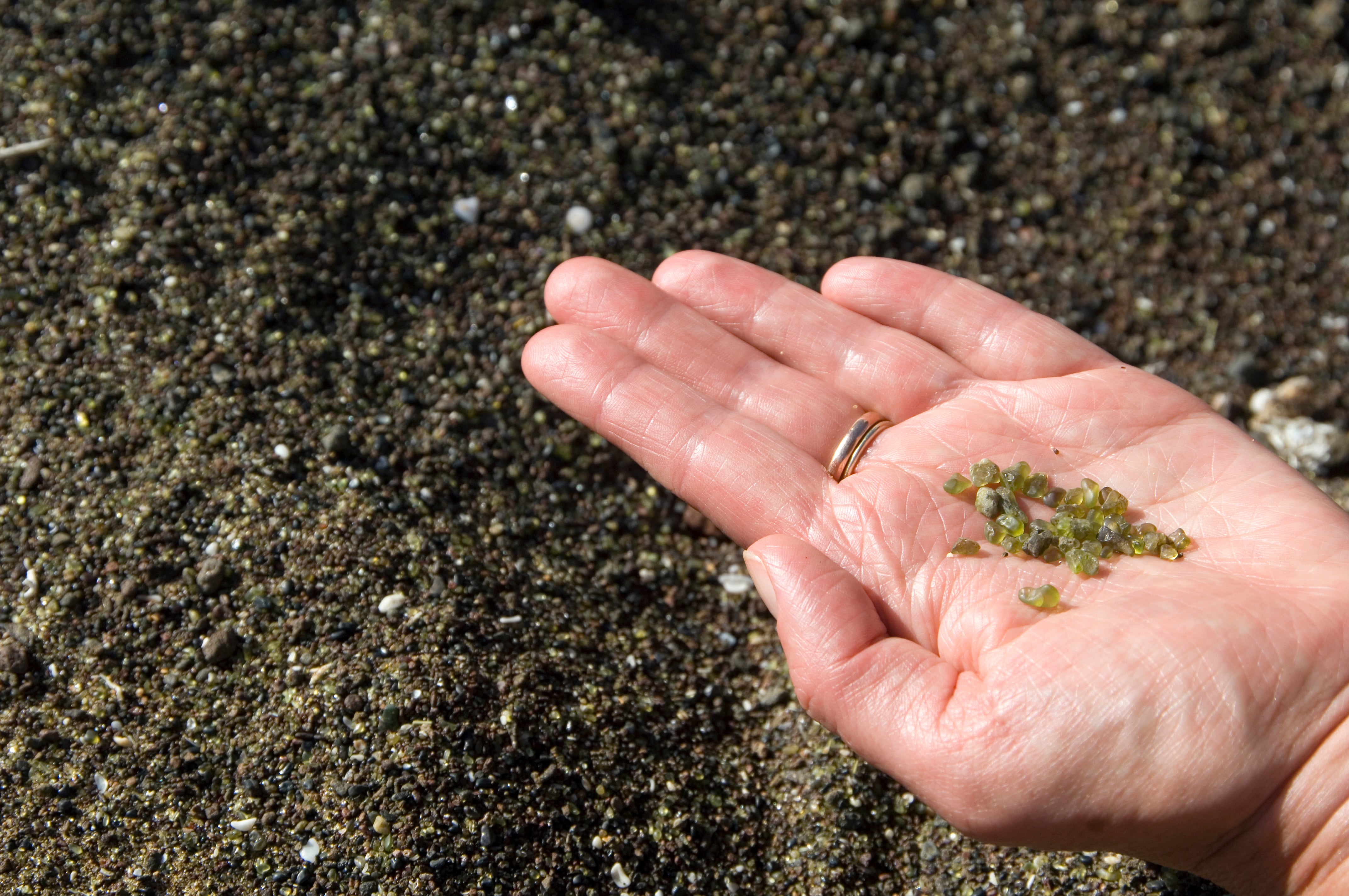
But everyone can chip in, no matter how humble. You can buy a two kilo bag of olivine for your back garden for around €5 – thereby capturing two kilos of CO2. You can have a rock garden or a gravel path made out of greensand. Wijnker has a vision of the beaches of the future that have – literally and metaphorically – gone green. It’s not quite a world in a grain of greensand, but it’s close.
The process of carbon capturing already happens in nature but it’s slow. “For three billion years the planet has been doing that. We just need to do it more.” Wijnker has sped it up by grinding olivine down to fragments or sand – greensand. The smaller the stone the faster the sequestration. All that is needed is rain to persuade the carbon dioxide to bond with the stone. And it’s good for your plants too since it releases magnesium and silicate. “If everyone sprinkles a bit of it we solve the problem,” says Wijnker. Or as Professor Olaf Schuiling (Wijnker calls him his “spiritual father”) puts it in his book, Olivine, the Philosopher’s Stone, “Let the Earth help save the Earth.”
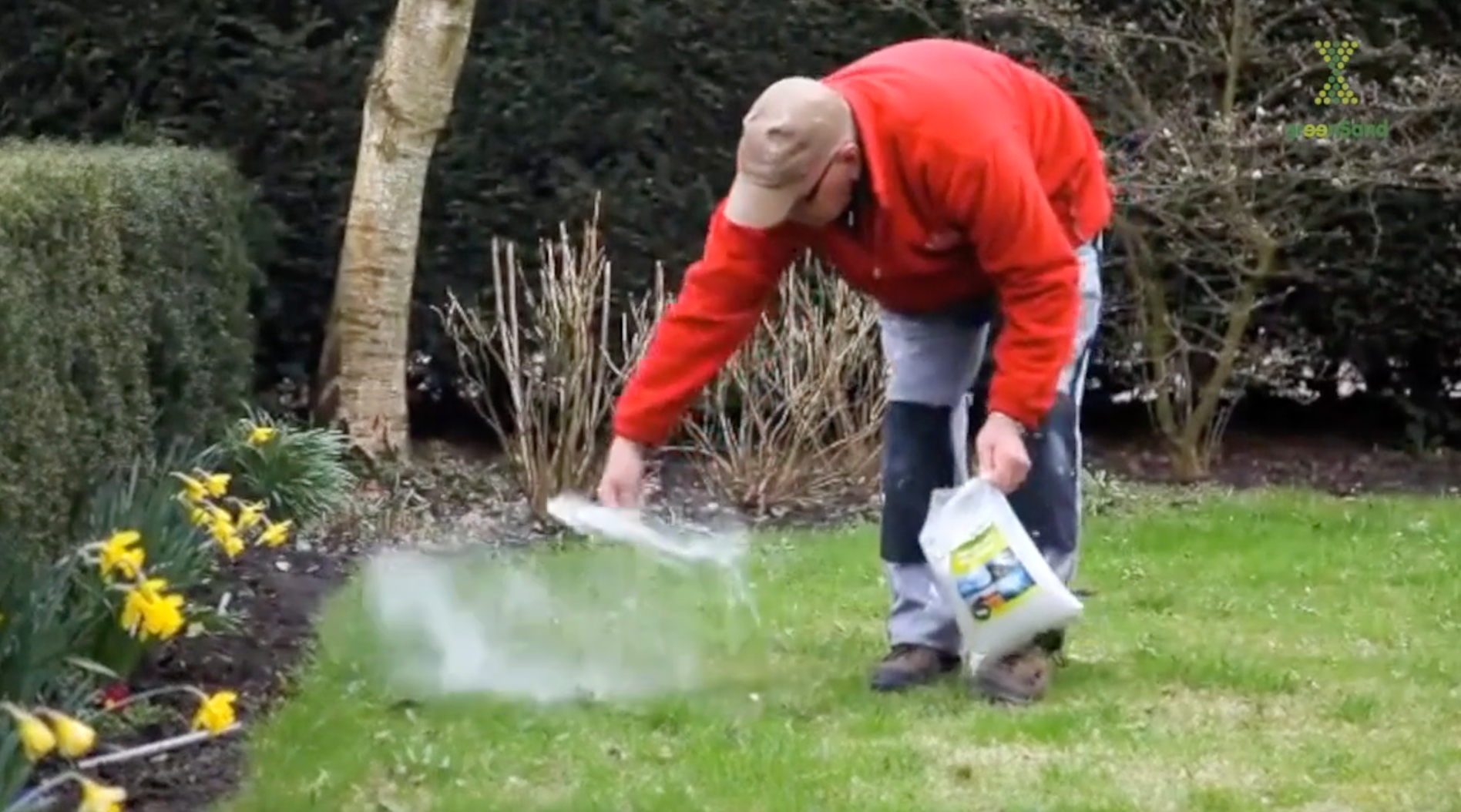
You don’t have to be a rocket scientist to work on carbon capture, but it probably helps. Fortunately, Shaun Meehan is a rocket scientist, or was until recently. Meehan started off as a teenager working in a laser lab for fun. And he spent a couple of years at the South Pole, before joining Planet Inc and launching satellites and designing his own rocket. Now, as chief scientist heading up R&D at Charm Industrial, his focus is more terrestrial. Where Greensand was simple and low tech, Charm is more complex and definitely higher tech and, not surprisingly, based in San Francisco. “I love tech,” says Meehan. “I’m constantly working on this stuff.” He and his girlfriend, Kelly Hering (a mechanical engineer and CTO at Charm), like to discuss hardware and software over lunch and restore old robots in their spare time. Behind them they have a team of 12 “kind engineers” who are highly “mission-motivated”.
Think of all those old movies (or even The Beverly Hillbillies) in which oil is gushing up out of the ground. Now rewind the film. Shove the black stuff back in again. That’s what Charm are doing with their “bio-oil sequestration”. We need to remember that a lot of carbon is already captured in soil and plants. So-called “biomass” is grass or wood or agricultural waste from farms and backyards. “People have tried to make it work as a fuel,” says Meehan. “Our discovery was that it doesn’t have a high energy content but it does have a high carbon content.” Their technique consists of taking biomass and converting it into oil and then re-injecting that back into the Earth’s crust whence it came.
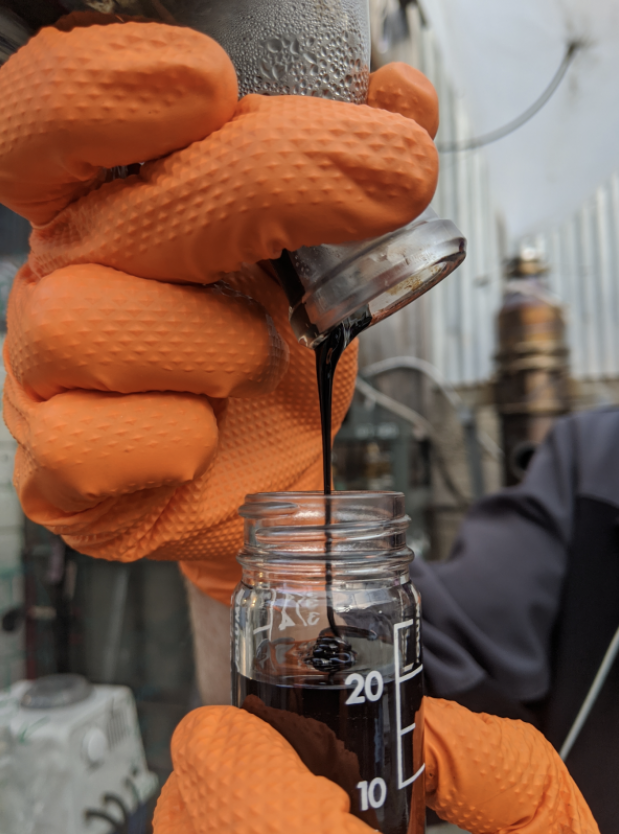
All those old oil wells can be re-utilised – but in reverse, in what is known as “negative emission”. Ironically, there is a symmetry between Charm and the system they are trying to replace. “We have the same architecture,” says Meehan. “In the US there’s a ton of jobs dependent on oil and gas. We can help re-tool those industries. The oil trucks don’t go away. As they fade out we ramp up and use those very same people to do similar jobs, but it’s like the opposite. Fuel tankers – and tanker drivers – will still be needed to transport oil around on its way back.”
That is the dream. They have already delivered 4,000 tons of negative emissions. Their first customer was Stripe, the online payment company. But there are technical challenges every step of the way. They had their best brains working on the problem of how to get grass to flow through a hopper (ultimately coming up with a motorised system involving a lot of good vibrations). They can produce hydrogen too, but it has to be compressed – and that requires energy (and expense). It’s also not pure but it might work for industrial facilities. Bio-oil by contrast is dense and sludgy and easy to transport.
At present one ton of CO2 costs $600 to remove. The vision is to build a reactor or reactors around the country that are capable of working on the gigaton scale, which will bring the cost right down – to $100, perhaps to as low as $50 a ton. “We anticipate tech developments that will enable us to bridge that gap,” says Meehan. “The way I look at it, there’s a weird disconnect in the way society looks at the cost of carbon. We’re extracting carbon from the atmosphere at the current price point. It should go hand in hand with what it costs to put it there in the first place.”

The third company backed by Sourceful is Heirloom, also based in San Francisco. They favour a system of “direct air capture with carbon mineralisation”. The founder of Heirloom is Shashank Samala, who was born in Hyderabad, studied at an Ivy League university, and set up Tempo Automation – building robots to build circuit boards. Then he read the Intergovernmental Panel on Climate Change report in 2018 and decided he had to do something about it. His head of commercialisation, Max Scholten, sums up the technology they zeroed in on: “We pull carbon dioxide from the air and turn it into stone.” Heirloom uses low cost minerals and processes them into a form that reacts with CO2. They have a system that takes the process down from years to days. Then they heat up the stones to extract the carbon and pump it underground. “It will remain there for thousands of years.”
So we have a way of storing or utilising carbon, but do we in the UK have a shot at capturing CO2 right from the off?
Heirloom is something of a synthesis of Greensand and Charm. It’s a more charming Greensand. Scholten says that planting trees is “incredibly important for biodiversity, but trees are only a temporary solution to storage”. Trees die or burn in fires and then release their stores of carbon. What Heirloom calls “high quality carbon removal” has to be durable and scalable. One advantage of their approach is that they have to extract the minerals in the first place, but since it can be recycled they don’t have to keep on extracting. So they minimise the mining.
After spending millions on R&D, Greensand turned a profit for the first time in 2020. Carbon capture companies have three main commercial avenues. First, the “voluntary buyers”, tech companies like Shopify, Amazon and Microsoft that want to decarbonise and are willing and able to invest in carbon removal and offsetting. It’s not all about goodwill or enhancing the brand. As Scholten says: “For businesses to exist in 100 years we have to solve climate change.” Secondly, it’s easier in California where the “low carbon fuel standard” not only regulates fuels but also incorporates a protocol offering tax credits in exchange for carbon capture. But similar carbon compliance regulations are springing up around the world, from Canada to China. The third way is “carbon utilisation”. Charm and heirloom produce liquefied CO2 gas that can be used in making cement, carbon fibre and industrial diamonds.

One British company that could be using some of their excess carbon is Econic, based in Macclesfield. They don’t do carbon capture but carbon storage, putting it into useful things like mattresses and insulation and running shoes and skateboard wheels. “We make good products better,” says Keith Wiggins, their new CEO. They re-use existing carbon molecules rather than digging up new ones. Wiggins is a chemist by training, so he would say this, wouldn’t he, but he is surely right to say, “You can do things with chemistry”. The trouble with carbon dioxide, he points out, is that it is “a very stable molecule”. It can stick around in the atmosphere for thousands of years. Now they have found a way of stitching it on the back of polymers, he reckons that “one year’s production of one average size plant is the equivalent of planting 1.2 million trees”. Econic can also retrofit existing producers and Wiggins reckons there are hundreds of plants around the world that can easily be adapted to use Econic tech. “Eventually the oil wells are going to fill up – so you have to do something with it [the spare CO2].”

So we have a way of storing or utilising carbon, but do we in the UK have a shot at capturing CO2 right from the off? The good news is that the UK has its own answer to San Francisco in the shape of Leeds, and specifically the chemistry department of Leeds University, which is where C-Capture was born. C-Capture uses a solvent – cheap and readily available – that absorbs CO2; they can then siphon it off and bury it or sell it to Econic. The distinctive feature of their system is that it can hitch up to power plants and other forms of heavy industry and capture the carbon before it can get out and start wreaking havoc (but they can also do removal). Most of the people working there are graduates of the Leeds chemisty department, notably their head of chemistry, Dr Douglas Barnes, who is a graduate student of Professor Chris Rayner, who started the whole thing back in 2009. Barnes came up with the novel chemistry that underpins their methodology. “I was at a presentation and I was mainly staring out of the window, thinking about the carbon capture problem. But there was a slide or a piece of information that set the cogs in my brain whirring. I came into work the next day and we set up an experiment and got a positive result.”
The Barnes “flight of fancy” (in his words) was back in 2013. Now C-Capture is garlanded with green energy prizes, backed by a multimillion grant from the Department of Business, Energy, and Industrial Strategy, and is even now soaking up CO2 from the Drax power stations. They have a short-term target of capturing 10,000 tons per day per site. But their longer-term vision is of CCUS (carbon capture utilisation and storage) “clusters” scattered around the four corners of the UK and bestriding assorted industries, connected by pipelines. C-Capture reckon that around 200 years-worth of emissions can be shoved a couple of kilometres down beneath the seabed, making use of empty gas and oil fields. The C-Capture technology is to be featured in an exhibition at the Science Museum (whenever it opens) on “Our Future Planet”. This is tomorrow’s world, but to some extent the future is already here.
Read More:
The race is on. I wonder if the bookies have odds on who is most likely to cross the Elon Musk $100m line first. Maybe all the inspiring up-and-coming companies I’ve mentioned above could be winners. But in any case it is clear that there is no one solution to the problem of reducing CO2 in the atmosphere. The fact is everything is still evolving in the field. Anything could happen. Private enterprise and the public sector are converging. The tech is getting better all the time and the economics of it is making more and more sense. As Helen Atkinson, another of the Leeds graduates at C-Capture, said to me, “It’s expensive, but if you compare it to the cost of doing nothing, it’s a bargain.”
This is not a Pangloss story – I am not arguing that this is the best of all possible worlds. We are already severely messed up. If my figures are right, at present we only have an annual 50 billion or so tons of CO2 and other assorted noxious gases left to worry about. So there is a way to go to achieve net-zero. We are not talking about utopia. But neither are we looking at apocalypse now.
As Douglas Barnes puts it: “Emissions are embedded in everything we do, from the moment we get up to the time we go to bed. We need to rethink everything.” But he describes himself as “a climate optimist” and expects to see a decline in our emissions over the next decade or two. In theory we can capture 95 per cent of the carbon dioxide we emit. We have the resources and the ingenuity to fix things. Our climate crisis is not yet terminal. We can still rewind.
Join our commenting forum
Join thought-provoking conversations, follow other Independent readers and see their replies
Comments